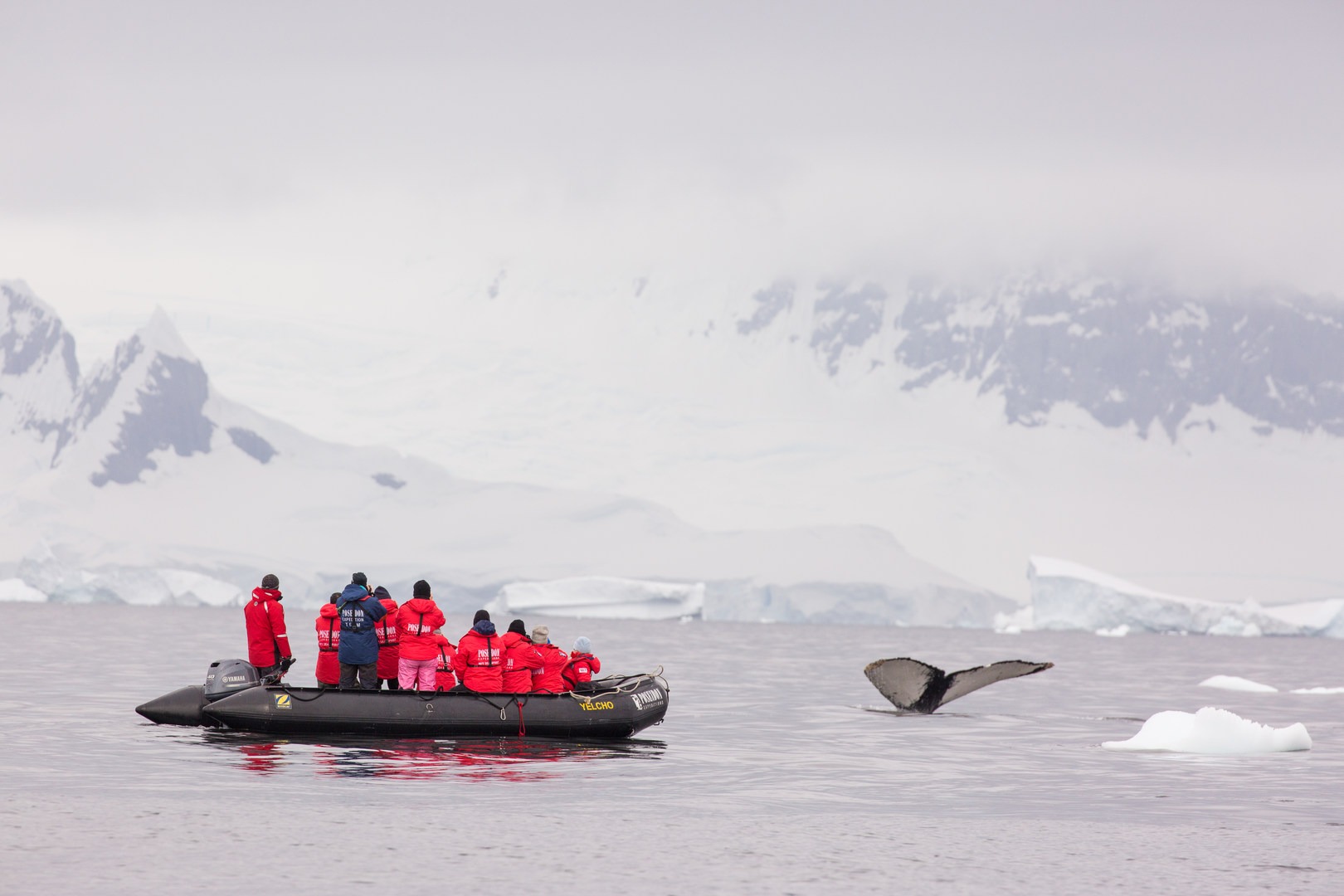You are here
Could your next travels help answer pressing scientific questions? With a new generation of polar expedition cruises, you can experience penguins, polar bears, and whales while actively being the scientist and contributing to citizen science efforts in remote destinations. Cruises to polar waters have become increasingly common, yet in the Antarctic and arctic, big biological and climate questions loom. Citizen science is coming to the rescue, at once answering a need for better scientific understanding and a demand for tourism that is more than just another fun holiday.
The idea is simple: When traveling to these remote waters, train your camera, your binoculars, your pen, and your citizen science app on points of interest to scientists. These photos and observations become a resource of important value for marine research and in the greater fields of science. The best citizen science projects don’t just ask for data, they engage participants and reward contributions by sharing findings. What did scientists learn from your photo? An increasingly popular example is the whale photo identification application called Happywhale. Submit your photos from any whale watching excursion, whether near home or deep in the Antarctic, and Happywhale will identify your whale to the individual. The project's database knows almost 20,000 individual humpback whales after receiving well over 100,000 photos; your whale might be a known individual with a name, a story, and a sighting history (you'll be notified with a link to a map of your whale's travels). Or your whale might be new to science (you can adopt and name your whale). After you submit your photo, just wait; when your whale is seen in the future, you'll be notified again, allowing you to follow your whale’s migrations around the world.
Images from whale watchers have uncovered some interesting patterns, such as humpbacks migrating from Hawaii to waters farther north into the Arctic Ocean than ever seen before, and some of the longest migrations of any whales in the world that extend from the Antarctic Peninsula to Tonga. Humpbacks undertake migrations of thousands of miles every year, eating thousands of pounds of krill or fish per day through the summer to store energy for a winter spent fasting, mating, and breeding in warm tropical waters. Most large whale species around the world are still recovering from intensive industrial whaling that in some cases consumed more than 99% of populations alive at the turn of the 20th century. But recovery remains uncertain for some whale populations, and there are unknown impacts from increased shipping traffic, entanglement in fishing gear and climate change.
Whales are difficult to study, especially when it comes to counting whole populations. Fortunately most species are individually recognizable; humpback whales, for example, often lift their tails when they dive, and the underside of every tail has a unique shape and pattern, much like a human face or fingerprint. Since the 1970s researchers have built catalogs of known whales, tracking individuals season after season. But tracking whales at the scale of all the world’s oceans takes a scale of data that is only possible if scientists collaborate with each other and with the public. Happywhale serves this need, with web-based automation achieving a scale previously impossible with manual image matching techniques. Collectively, researchers and citizen scientists are documenting thousands of whales and building a rich understanding of whale populations and migrations around the world.
Two polar expedition cruises with great opportunities to see and photograph whales will be led by Happywhale’s co-founder Ted Cheeseman in 2019. In Antarctica, a baby boom of humpback whales are rebuilding populations that were hunted out a century ago. Travelers can expect to zodiac cruise among hundreds of whales, and by photographing them, to contribute to tracking the progress of this baby boom. Voyage details can be found here.
In the remote Russian Arctic archipelago of Franz Josef Land, sea ice is now disappearing earlier every season, ironically opening up habitat that whales appear to be taking advantage of. Humpback, fin, minke and the rare, elusive bowhead can be found in waters where very few have ever traveled, making citizen science contributions in whale identification even more unique and valuable. Details regarding this voyage can be found here.





Comments
Sign In and share them.